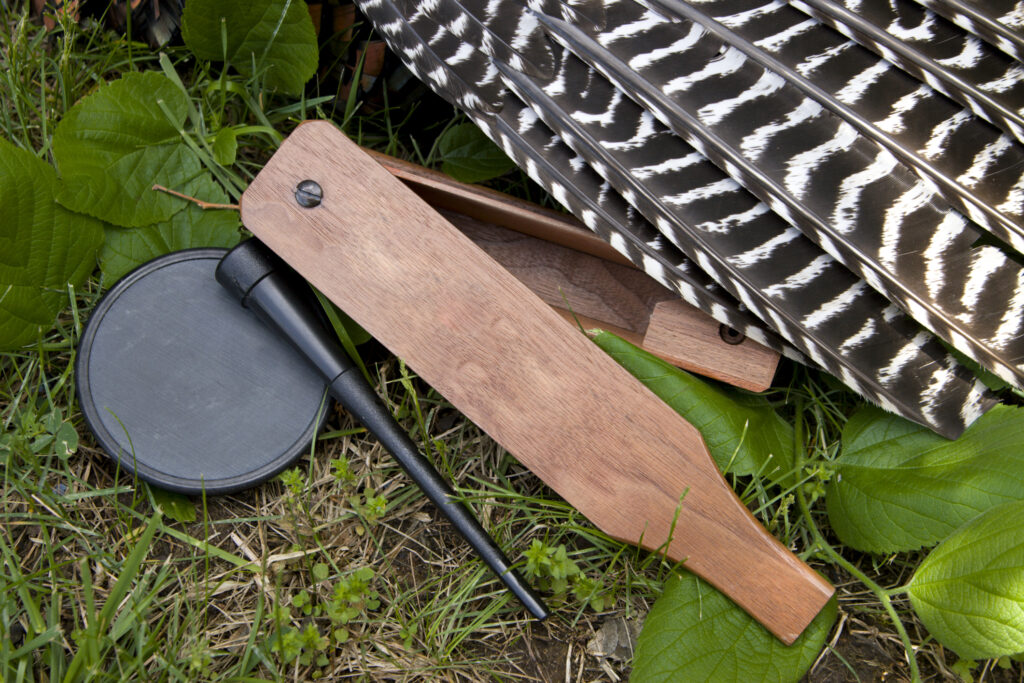No items in shopping pack.
February 12, 2024
Which Types of Turkey Calls Should You Carry in Your Vest?
Share:

Every seasoned turkey hunter knows that the right turkey call will make or break your success.
That’s because turkey-talk includes a wide variety of unique sounds from yelps to gobbles. Your ability to mimic those sounds is essential for attracting the perfect bird.
Different turkey calls produce noises of varying frequencies, volumes and pitches. Which one to use depends on the sound you want to make, along with other factors including:
- Time of day
- Weather
- Environmental conditions
- Wind speed and direction
Another challenge is that turkeys learn to avoid familiar calls after hearing them over and over from competing hunters. The best hunters learn the art of choosing the right call and using it sparingly.
It’s essential to bring along more than one turkey call in your vest for different hunting scenarios. With that in mind, let’s go over different types of calls and when to use them.
Box Calls
Most box calls are made of wood such as mahogany, cedar or walnut. They consist of a wood paddle and hollow wood box and are fairly simple to use.
Even beginners can produce loud sounds including a basic hen yelp, along with clucks and cutts. Box calls are great for calling toms from a distance, for hunting in open areas and for windy conditions.
They are less adapted for producing softer turkey sounds, making them harder to use at close range. Box calls may be less effective in humid, damp or rainy weather.
Pot Calls
Also called slate calls, pot calls consist of a striker made of wood, carbon or aluminum and a pot made of slate, ceramic or glass. Although it takes a bit more practice to master than a box call, it’s very user-friendly once you get the hang of it.
A pot call offers good pitch and volume control for a wide range of sounds. It produces soft purrs and clucks as well as loud, raspy tones for long-range calling.
Like a box call, pot calls are less effective in humid and moist conditions and in close quarters.
Diaphragm Calls
Also called a mouth call, diaphragm turkey calls have a rubber or latex reed that vibrates when you blow on it. They are available in a variety of models for pitch and tone,
Diaphragm calls have a steeper learning curve than box and pot calls, but the rewards are well worth the effort. They are well-suited to close quarters calling and produce natural-sounding yelps at a louder volume. They are also great at whispered purrs and clucks.
They can be more challenging to use in windy weather and over long distances.
Push Button Calls
A push button call uses a spring-loaded plunger that strikes a small piece of wood inside a small box. You can produce different hen sounds by varying the speed and pressure applied to the plunger.
Because they are easy to use, push-button calls are ideal for beginners and youth hunters. They produce a smaller variety of raspy and smooth sounds than other types of calls.
Locator Calls
A locator call doesn’t imitate turkeys at all! Instead, it mimics other creatures including crows and owls. Their purpose is to trick curious toms into revealing their locations by gobbling in response.
They are highly useful for early morning turkey hunts.
Book Your Next Turkey Hunt
When you’re ready to head outside for your next turkey hunting adventure, join Huunt. You’ll get exclusive access to hunting land for lease for solo or guided hunts.
Sign up online for a Huunt membership today or send an email to [email protected].
Start Your Adventure Today
We make it simple to list and lease land, book guided hunts and more. Find your next hunting spot or guided trip. Earn extra income by letting others enjoy your land. HUUNT helps you make the most of every opportunity. Become a member today!